The following is a guest post written by Karen L. Kilcup, Professor of English, The University of North Carolina at Greensboro, and Angela Sorby, Associate Professor of English, Marquette University. I’m very excited about this new anthology published by Johns Hopkins University Press, so I thought I’d let them tell you about it in their own words.
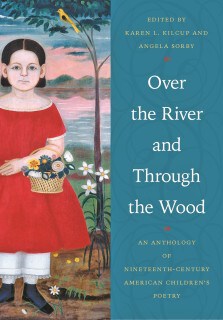
Who could resist a poem that opens like this:
Have Angleworms attractive homes?
Do Bumble-bees have brains?
Do Caterpillars carry combs?
Do Ducks dismantle drains?
Charles E. Carryl’s “Memorandrums” typifies the animated, modern spirit of our new anthology, Over the River and Through the Wood. We began our project not only because we admire the writing—its ease, its playfulness, its innovation—but also because we realized how many nineteenth-century children’s poems are still vital to Americans—parents and grandparents as well as their children. From the title poem to “Mary’s Lamb” to “’Twas the night before Christmas” (“Account of a Visit from St. Nicholas”), many of the verses in Over the River remain part of our collective consciousness, even if we can’t immediately identify the sources. I remember my own grandmother singing “Over the river and through the wood,” though she changed the second line: “To grandmother’s house we go.” Since she prepared the Thanksgiving turkey and mountains of vegetables and pies, I imagine that she felt just fine about this substitution. Our collection includes some other wonderful holiday poems, including one delicious ode to turkey dinner (Cooke’s “Turkey: A Thanksgiving Ode”) and a comic ballad from the bird’s perspective, “The Turkey’s Opinion.” Of course there’s far more to the anthology than holiday poems, but many of the most beloved, familiar pieces live in that section. Many of our poems offer major contributions to America’s literary tradition, including works by authors whom we don’t ordinarily associate with children, such as Charlotte Perkins Gilman and Sarah Piatt.
One children’s poem, “Mary’s Lamb” was actually the first sound recording ever made by Thomas Edison; you can listen to a scratchy, slightly later version by Edison here. Sarah Josepha Hale’s famous poem draws from a real story about a girl bringing her pet to the Redstone School, now in Sudbury, Massachusetts. You can visit the school from mid-May through mid-October.
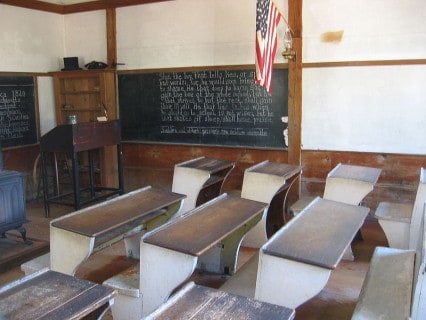
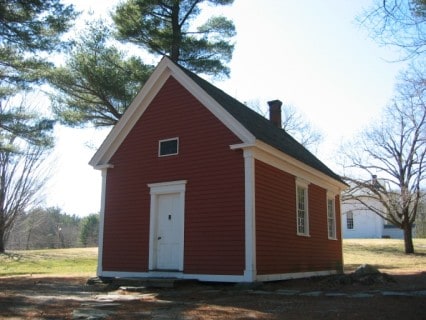
Boys as well as girls feature prominently in the collection. Benjamin Franklin King’s “The Woodticks,” a dialect poem spoken by a boy, makes readers savor a tick-free home (and perhaps take a bath), while Mrs. A. M. Diaz’ “Two Little Rogues” celebrates the “hullaballoo” they make when mother leaves home. Boys and girls alike will delight in one of the Technology poems, “The Punjaubs of Siam,” which depicts elephants displaced by the steam railroad.
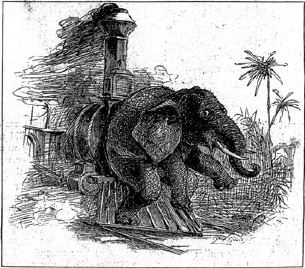
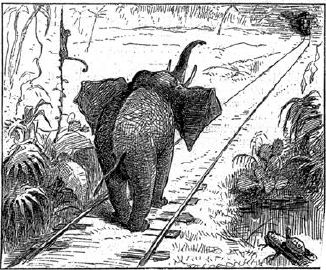
Over the River has occupied nearly six years from start to finish. We began by surveying familiar poets and famous collections of children’s poetry. But having both done archival research, we realized that there were probably many more that we’d miss if we stayed with the obvious authors, so we began a careful search through nineteenth-century periodicals such as The Juvenile Miscellany and St. Nicholas.
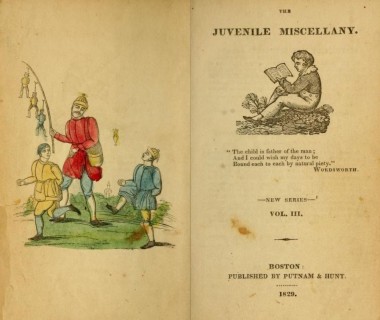
We discovered there and elsewhere numerous wonderful poems by poets with whom we were entirely unfamiliar, including many by children themselves, such as the youthful Stephen Crane, Edith Wharton, and Robert Frost. One of my favorites is by ten-year-old Dora Read Goodale. In 1877, “The Grumbler” appeared in St. Nicholas in a section entitled “Poems by Two Little American Girls.” Here we learn that the sisters live “on a large and isolated farm,” high in the Berkshire hills, called Sky Farm. The editor describes them “peeping into mossy dells, where wild flowers love to hide, hunting the early arbutus, the queen harebell, or the blue gentian.” But Dora rejected this floral tribute, penning a grimly comical poem that begins with the grumbler’s youth: “His coat was too thick and his cap was too thin / He couldn’t be quiet, he hated a din.” We leave it to you to discover the complaints of “His Maturity” and “His Old Age.”
Apart from some weird and intriguing titles (“What the Lichens Sang,” “The Discontented Manicure Scissors,” “The Mushroom’s Soliloquy”), the illustrations often dazzled us. There were many that we wanted to include but couldn’t, such as “The Journey” by Elizabeth Shippen Green. Author Josephine Preston Peabody describes a child taking a train ride, and Shippen Green shows him looking out the window. Her castles in the clouds are especially tantalizing:
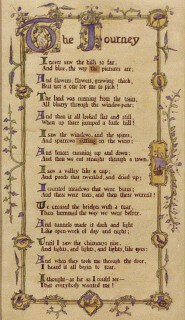
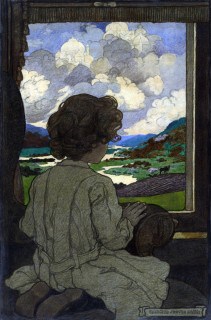
This image was one of a series that accompanied Peabody’s cluster of poems, titled “The Little Past,” in the December 1903 issue of Harper’s Magazine. When Peabody republished the poem as “Journey” in her single-author collection The Singing Leaves, she regrettably omitted Green’s images and illuminated text.
There are many other great illustrations, both in the magazines and authors’ individual volumes, including Oliver Herford’s “A Chameleon”:
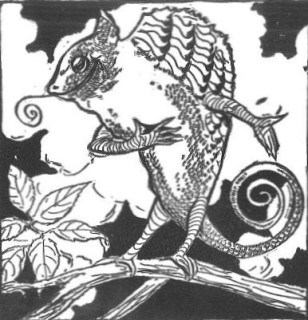
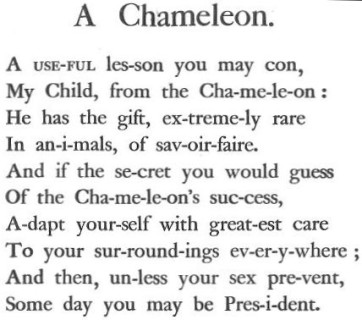
Presenting a collection with writers diverse by ethnicity and region was another important goal, and so we worked especially hard to locate many more fugitive works. We found poems in the periodical of the Cherokee Female Seminary, Cherokee Rose Buds. As you can see from the image below, many of the attendees were young girls.
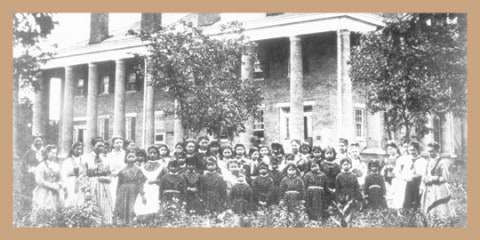
Colleagues provided crucial assistance, pointing us to important work by sixteen-year-old Christina Moody and the students at the New-York African Free-School. The North Carolinian Moody published her single-author volume, A Tiny Spark, in 1910.
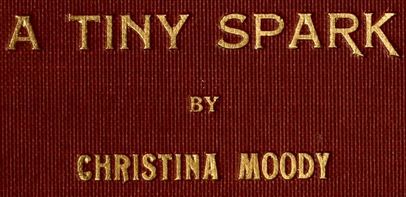
Moody’s contributions include, marvelously, one of our several “Mary’s Lamb” parodies. “Mary’s Little Goat” should delight us all, while “Chillun and Men” illuminates women’s social roles and “The Negro’s Flag and Country” proudly claims citizenship.
Poets from the New-York African Free-School express sentiments like that of twelve-year-old Thomas S. Sidney:
Freedom will break the tyrant’s chain,
And shatter all his whole domain;
From slavery she will always free,
And all her aim is liberty.
The Library of Congress documents how similar sentiments appeared throughout American society: the tintype below depicts a young boy with an American flag and a campaign button for Lincoln inside the front cover.
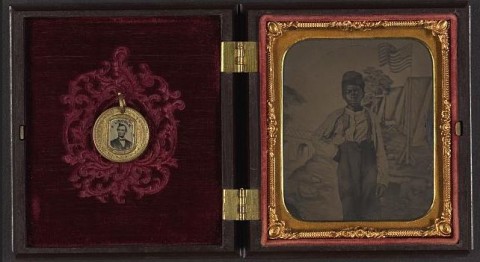
We’re excited that the great poems we’ve found will soon be available to children, parents, and grandparents, teachers and scholars, and we look forward to an extended conversation about the contributions that American children’s poetry has made to our literary and cultural traditions.
Karen L. Kilcup, Professor of English, The University of North Carolina at Greensboro
Angela Sorby, Associate Professor of English, Marquette University






